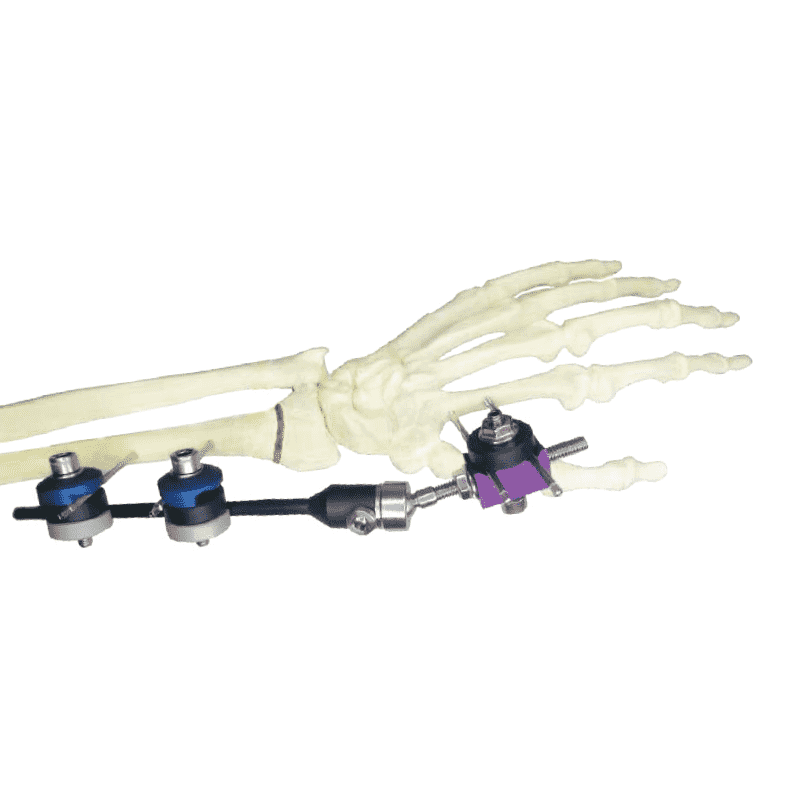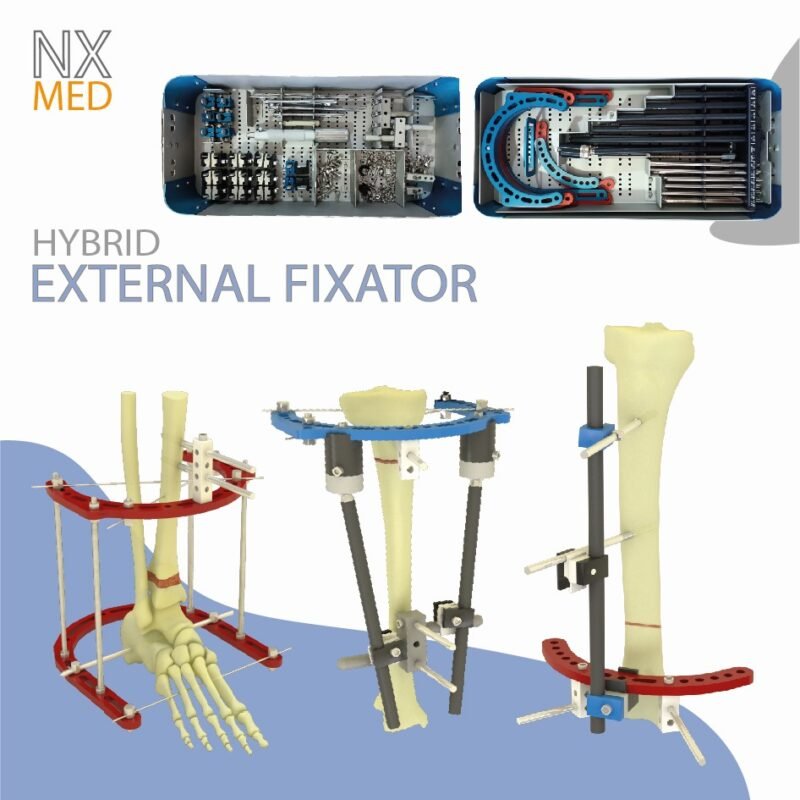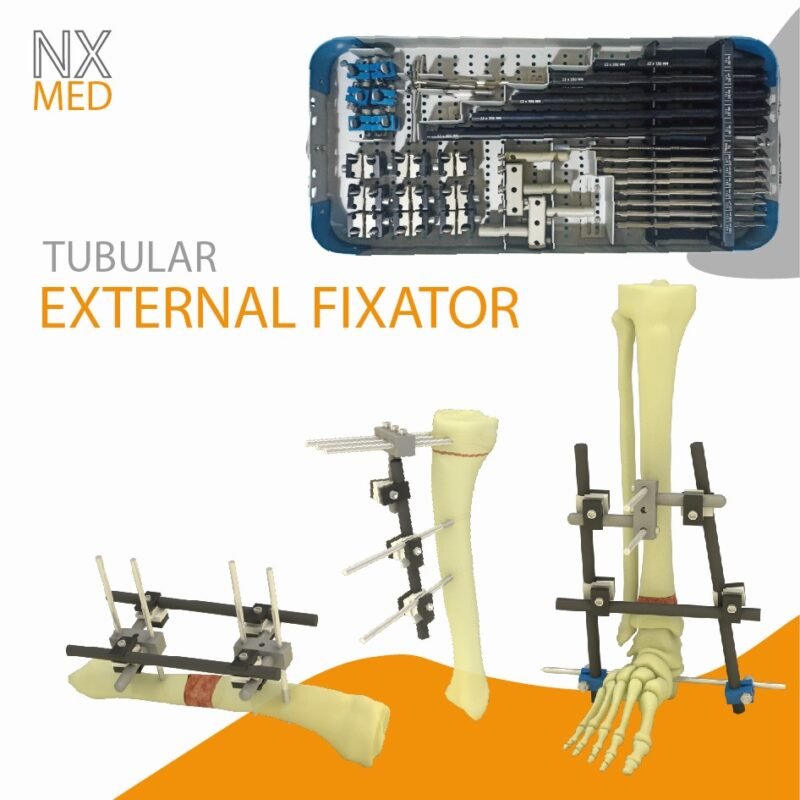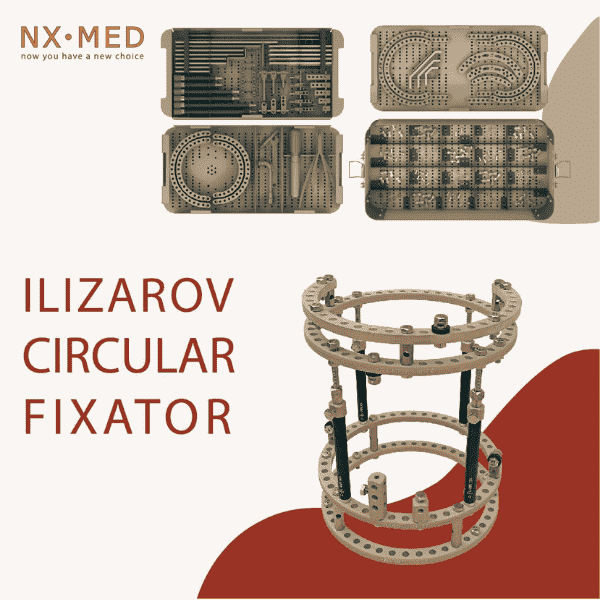Small Tubular Fixators
Wrist, Forearm and Pediatric Fixator Systems
Small tubular fixators are crucial in orthopedic surgery, especially for treating fractures and deformities in the wrist, forearm, and pediatric patients. These systems provide external stabilization, which is essential for proper bone healing and alignment.


Wrist Fixator Systems
Wrist fixator systems are designed to stabilize fractures and dislocations in the wrist. They are particularly useful for complex fractures that cannot be managed with internal fixation alone. These fixators consist of small, tubular rods and pins that are inserted into the bone and connected externally. This setup allows for precise adjustment and stabilization of the fracture, promoting optimal healing. The external nature of the fixator also facilitates easy monitoring of the healing process and adjustments as needed.
Forearm Fixator Systems
Forearm fixator systems are used to treat fractures of the radius and ulna, the two long bones in the forearm. These fixators are particularly beneficial for open fractures, where the bone has broken through the skin, and for comminuted fractures, where the bone is shattered into multiple pieces. The fixator system stabilizes the bone fragments, maintaining proper alignment and length during the healing process. This is crucial for restoring the function and strength of the forearm.
Pediatric Fixator Systems
Pediatric fixator systems are specially designed for children, whose bones are still growing and developing. These systems are smaller and lighter than those used for adults, minimizing discomfort and allowing for normal growth. Pediatric fixators are used to treat a variety of conditions, including fractures, congenital deformities, and length discrepancies. The ability to adjust the fixator externally is particularly beneficial for pediatric patients, as it allows for gradual correction of deformities and lengthening of bones without the need for multiple surgeries.
Advantages of Small Tubular Fixators
- Minimally Invasive: These systems are less invasive compared to internal fixation methods, reducing the risk of infection and other complications.
- Adjustability: The external nature of the fixators allows for easy adjustments during the healing process, ensuring optimal alignment and stabilization.
- Versatility: Small tubular fixators can be used for a wide range of fractures and deformities, making them a versatile tool in orthopedic surgery.
- Monitoring: The external setup facilitates easy monitoring of the healing process, allowing for timely interventions if needed.
In conclusion, small tubular fixators for the wrist, forearm, and pediatric patients play a crucial role in modern orthopedic surgery. Their ability to provide stable, adjustable, and minimally invasive fixation makes them an invaluable tool for treating complex fractures and deformities.



